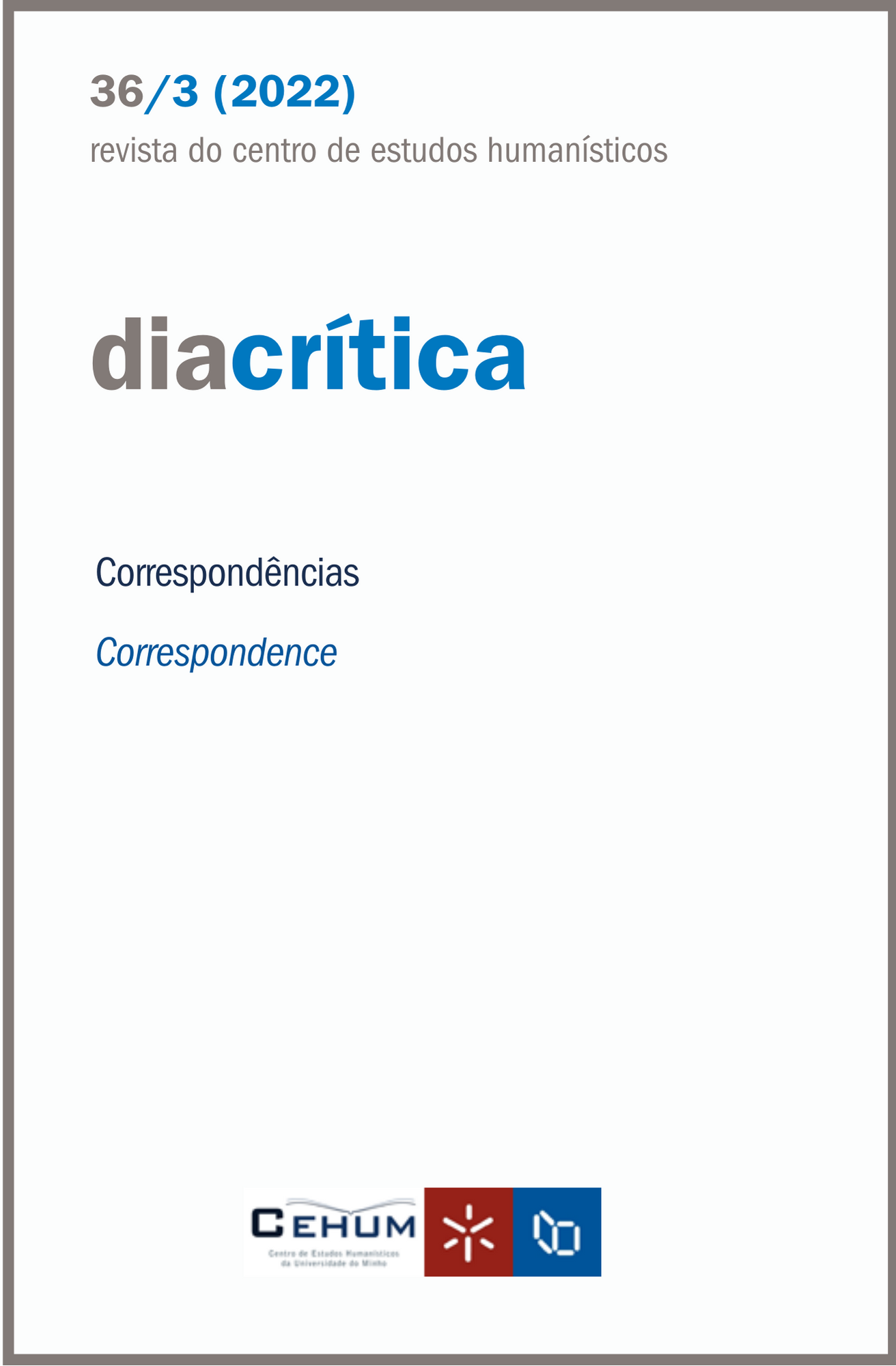Introdução
DOI:
https://doi.org/10.21814/diacritica.5074Palavras-chave:
Cartas, Literatura, Cultura, LinguísticaResumo
O caráter polifacetado da carta faz dela um objeto de estudo particularmente estimulante, porque transversal a várias áreas. Justifica-se por isso a escolha da correspondência como tema deste número da Diacrítica. Nele se pretende reunir um conjunto de trabalhos originais ilustrativos de diferentes tipos de abordagem que permitam ilustrar a riqueza e as potencialidades de um domínio tão amplo e diversificado a que vem sendo dedicada crescente atenção. Sem excluir outras possibilidades, a presente chamada para artigos dirige-se particularmente a contributos provenientes dos estudos linguísticos, dos estudos literários e dos estudos culturais. No primeiro caso, enquanto produto linguístico, a carta permite tratar questões relacionadas com a heterogeneidade composicional, a organização textual, as estratégias linguísticas da (des)cortesia ou da (in)delicadeza, da representação do “eu” e do destinatário, da implicação deste no texto, entre outras. No domínio dos estudos literários, tanto as cartas de escritores, com ou sem recorte literário, como o aproveitamento literário do modelo textual da carta ou o emprego da carta como elemento narrativo, apresentam fecundas vias de abordagem, que vão desde o lugar da correspondência na obra de um escritor, às relações entre a epistolografia e os géneros autobiográficos, à construção da imagem do “eu” como escritor, às relações entre as cartas de um escritor e a sua restante obra, por exemplo. A emergência e as metamorfoses da carta são, desde logo, assunto do foro dos estudos culturais. Para além destes assuntos mais vastos, a carta poderá também fornecer pistas sobre a construção social da intimidade, sobre questões de sociabilidade, de género, de relacionamento entre géneros, ou, atendendo à sua particular relação com a viagem, sobre questões de auto e hetero-representação. A conjugação de diversos olhares concorrerá para encarar de outro modo esta forma de memória que, utilizando ou não recursos artísticos, não se limita a ser o território da expressão de um “eu”.
Downloads
Publicado
Como Citar
Edição
Secção
Licença
Direitos de Autor (c) 2023 Ana Ribeiro, Carlos Mendes de Sousa, Sérgio Guimarães Sousa

Este trabalho encontra-se publicado com a Creative Commons Atribuição-NãoComercial 4.0.










